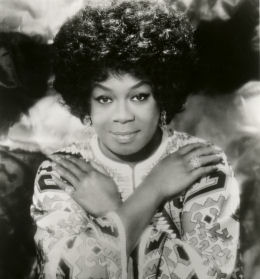
The most talked about voice in the 1940’s was indeed Sarah Vaughan, she set the course for modern jazz music and is now often referred to as the Queen of Bebop.
Sarah Lois Vaughan was born in Newark, New Jersey, on March 27, 1924. Outside of their regular jobs, as a carpenter and as a laundress, her parents were also musicians. Growing up in Newark, Vaughan studied the piano and organ, and she also sang as a soloist at Mount Zion Baptist Church. Vaughan’s first step toward becoming a professional singer was taken at a talent contest held at Harlem’s Apollo Theater, where Black Americans made their name. After being dared to enter the contest, she won the 1942 competition with her rendition of “Body and Soul.” She also caught the attention of, Billy Eckstine, another artist who persuaded Earl Hines to hire Vaughan to sing with his orchestra.
In 1944, Vaughan left Hines to join Eckstine’s new band. Also working with Eckstine were trumpeter Dizzy Gillespie and saxophonist Charlie Parker, who introduced the group to a new form of jazz, known as bebop. An inspired Vaughan brought bebop into her singing, which can be heard in the 1945 recording of “Lover Man” that she made with Parker and Gillespie. After performing with Eckstine’s orchestra for a year, Vaughan briefly worked with John Kirby before leaving big bands behind to become a solo artist (though she often reunited with Eckstine for duets). Having already been given the nickname “Sassy” as a commentary on her onstage style, it was while striking out on her own that she was dubbed “The Divine One” by a DJ in Chicago. In the late 1940s, her popular recordings included “If You Could See Me Now” and “It’s Magic.” The next decade saw Vaughan produce more pop music, though when she joined Mercury Records she also recorded jazz numbers on a subsidiary label, EmArcy. She sang hits like “Whatever Lola Wants” (1955), “Misty” (1957), and “Broken-Hearted Melody” (1959), which sold more than a million copies. Vaughan gave concerts in the United States and Europe, and her singing was also heard in films such as Disc Jockey (1951) and Basin Street Revue (1956). After the 1950s, shifting musical tastes meant that Vaughan no longer produced huge hits. However, she remained a popular performer, particularly when she sang live. In front of an audience, her emotional, vibrato-rich delivery, three-octave vocal range, and captivating scat technique were even more appealing. Though her voice took on a deeper pitch as Vaughan got older—likely due in part to her smoking habit—this didn’t impact the quality of her singing, as could be heard on “Send in the Clowns,” a staple in her repertoire. Vaughan’s later recordings include interpretations of Beatles songs and Brazilian music. Over the years, she collaborated with people like producer Quincy Jones, pianist Oscar Peterson, and conductor Michael Tilson Thomas. Vaughan won her first Grammy thanks to her work with Thomas and the Los Angeles Philharmonic on Gershwin Live! (1982).
Throughout her career, Vaughan was recognized as a supremely gifted singer and performer. She was invited to perform at the White House and at venues like Carnegie Hall, was awarded a Lifetime Achievement Grammy in 1989 and was selected to join the Jazz Hall of Fame in 1990. She also received a star on the Hollywood Walk of Fame.
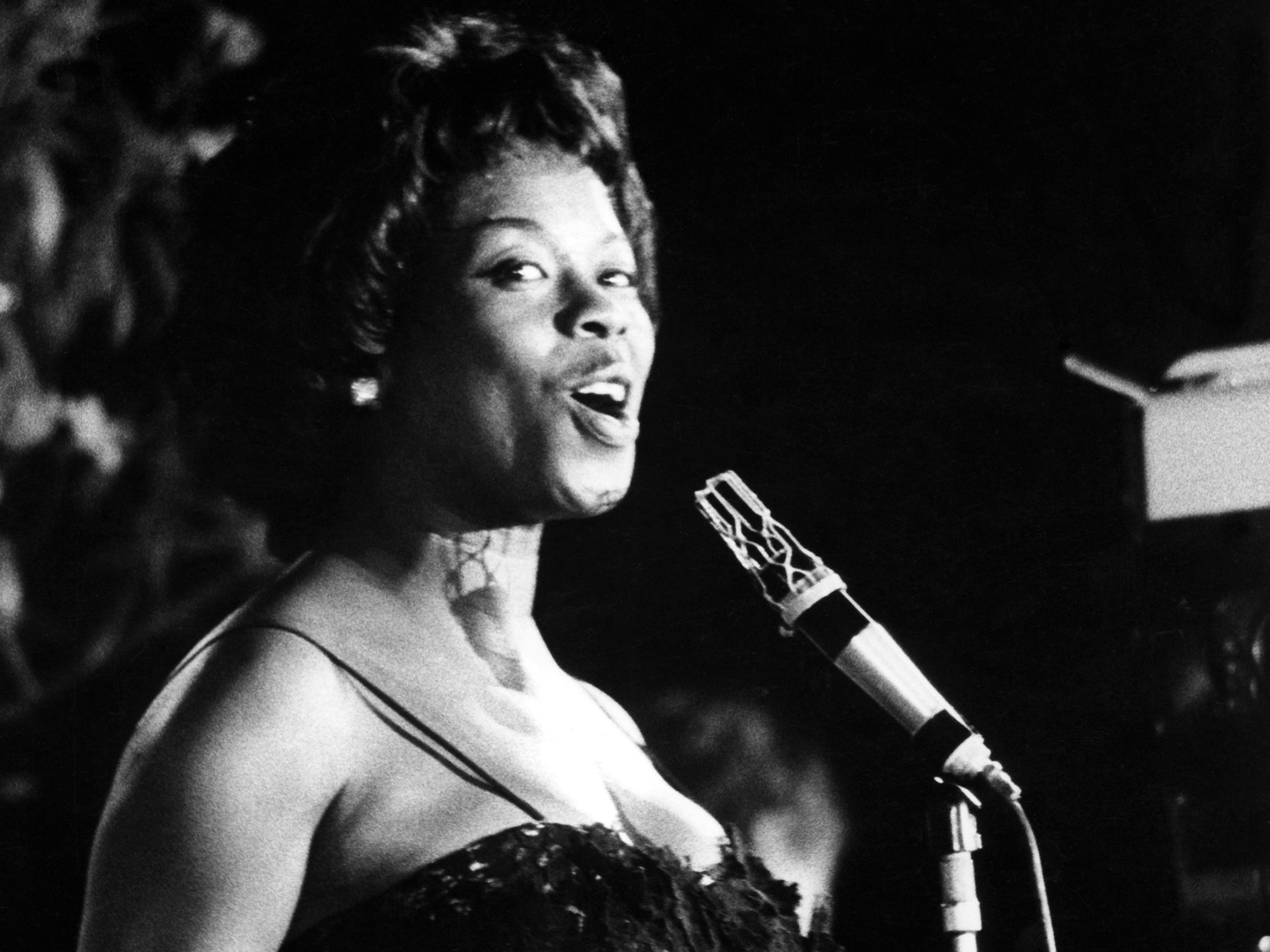
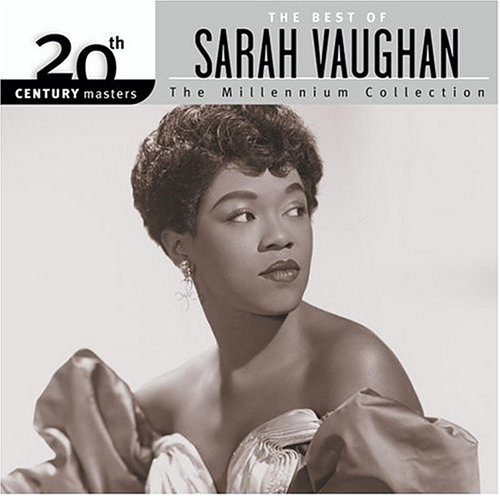
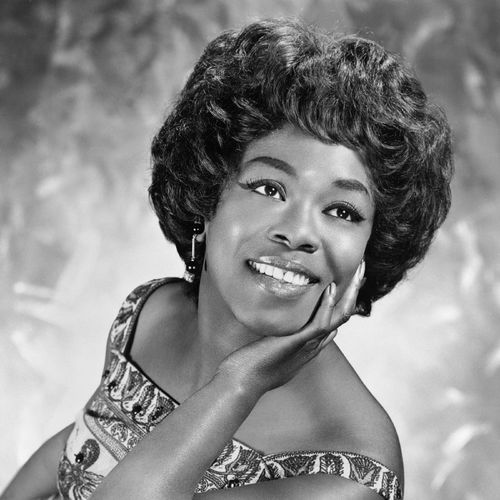
Vaughan’s final concert was given at New York’s Blue Note Club in 1989. She passed away from lung cancer on April 3, 1990, at age 66, in Hidden Hills, a suburb of Los Angeles, California. Married and divorced four times, she was survived by her adopted daughter. Miss Vaughan’s marriage to Mr. Treadwell ended in divorce, as did her marriages to Clyde Atkins, a professional football player; Marshall Fisher, a Las Vegas restaurateur, and Waymon Reed, a trumpet player. She was survived by her mother, Ada, and a daughter, Deborah Vaughan, who uses the first name Paris for her acting career. Both lived in Los Angeles. Miss Vaughan’s body will be flown to Newark for a funeral service on Saturday at Mount Zion Baptist Church.
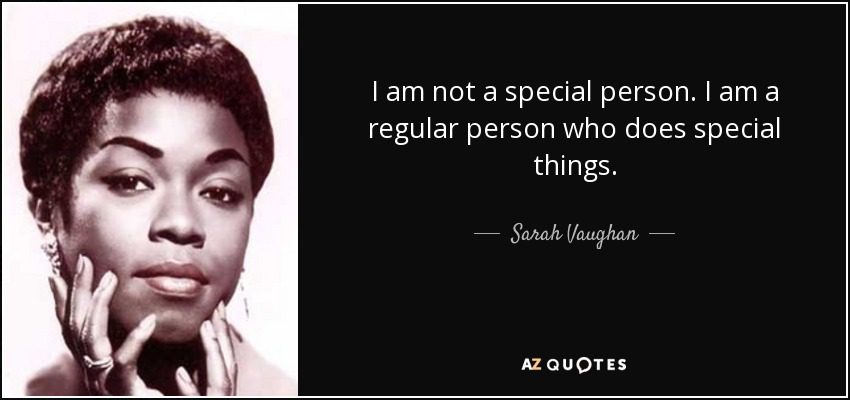
| Album | Year | Label | Notes |
|---|---|---|---|
| At Mister Kelly’s | 1957 | Mercury | |
| After Hours at the London House | 1959 | Mercury | |
| Sassy Swings the Tivoli | 1963 | Mercury | |
| Live in Japan | 1973 | Mainstream | |
| Sarah Vaughan with the Jimmy Rowles Quintet | 1975 | Mainstream | |
| Ronnie Scott’s Presents Sarah Vaughan Live | 1977 | Pye | |
| Gershwin Live! (with Michael Tilson Thomas and the Los Angeles Philharmonic) | 1982 | Columbia | Won Grammy Award for Best Jazz Vocal Performance, Female |
| In the City of Lights | 1999 | Justin Time | Recorded in 1985. Posthumous release |
| Album | Year | Label | |
|---|---|---|---|
| Sarah Vaughan in Hi-Fi | 1955 | Columbia | CL 745 |
| After Hours | 1955 | Columbia | – |
| Sarah Vaughan’s Golden Hits!!! | 1958 | Mercury | |
| The Complete Sarah Vaughan on Mercury | released 1986-1991 | Mercury/Polygram |
| EP | Year | Label |
|---|---|---|
| Hot Jazz | 1953 | Remington |
| The Divine Sarah Sings | 1954 | Mercury |
| Album/Song | Year | Label | Notes |
|---|---|---|---|
| “I know that my Redeemer liveth” from Part III of Handel‘s Messiah from Quincy Jones‘ soundtrack for Bob & Carol & Ted & Alice | 1969 | Bell | |
| “Blue” from Barry Manilow‘s 2:00 AM Paradise Cafe | 1984 | Arista | |
| “Bali Ha’i” and “Happy Talk” from South Pacific | 1986 | CBS | (Studio cast recording with Kiri Te Kanawa, Mandy Patinkin, and José Carreras) |
| “Wee B. Dooinit”, “Jazz Corner of the World”, “Birdland” and “Setembro” from Quincy Jones‘ Back on the Block | 1989 | Qwest | Vaughan’s final recording. |
| Title | Year | Peak chart positions | Album | |||||
|---|---|---|---|---|---|---|---|---|
| US [1][2] | US R&B [3] | US AC [4] | CAN [5] | ND [6] | UK [7] | |||
| “If You Could See Me Now“ | 1946 | — | — | — | — | — | — | N/A |
| “Mean to Me“ | — | — | — | — | — | — | N/A | |
| “A Hundred Years from Today“ | 1947 | — | — | — | — | — | — | N/A |
| “I Cover the Waterfront“ | — | — | — | — | — | — | N/A | |
| “Tenderly“ | 27 | — | — | — | — | — | The Divine Sarah Sings | |
| “It’s Magic“ | 1948 | 11 | — | — | — | — | — | |
| “Nature Boy“ | 9 | — | — | — | — | — | N/A | |
| “Black Coffee“ | 1949 | 13 | — | — | — | — | — | N/A |
| “While You Are Gone” | — | — | — | — | — | — | N/A | |
| “That Lucky Old Sun (Just Rolls Around Heaven All Day)“ | 14 | — | — | — | — | — | N/A | |
| “Fool’s Paradise” | — | — | — | — | — | — | N/A | |
| “Our Very Own” | 1950 | 15 | — | — | — | — | — | N/A |
| “I’m Crazy to Love You” | 26 | — | — | — | — | — | N/A | |
| “(I Love the Girl) I Love the Guy” | 10 | — | — | — | — | — | N/A | |
| “Don’t Worry ’bout Me” | — | — | — | — | — | — | N/A | |
| “These Things I Offer You (For a Lifetime)” | 1951 | 11 | — | — | — | — | — | N/A |
| “Vanity“ | 19 | — | — | — | — | — | N/A | |
| “Out o’ Breath” | — | — | — | — | — | — | N/A | |
| “Don’t Blame Me“ | — | — | — | — | — | — | N/A | |
| “I Ran All the Way Home” | 18 | — | — | — | — | — | N/A | |
| “Pinky” | 1952 | — | — | — | — | — | — | Sarah Vaughan in Hi-Fi |
| “If Someone Had Told Me” | — | — | — | — | — | — | N/A | |
| “Street of Dreams” | — | — | — | — | — | — | N/A | |
| “My Tormented Heart” | — | — | — | — | — | — | N/A | |
| “Sinner or Saint” | 22 | — | — | — | — | — | N/A | |
| “A Lover’s Quarrel” | 1953 | — | — | — | — | — | — | N/A |
| “Time” | — | — | — | — | — | — | N/A | |
| “Spring Will Be a Little Late This Year“ | — | — | — | — | — | — | Sarah Vaughan in Hi-Fi | |
| “It Might as Well Be Spring“ | — | — | — | — | — | — | ||
| “The Nearness of You“ | 1954 | — | — | — | — | — | — | |
| “Easy Come, Easy Go Lover” | — | — | — | — | — | — | N/A | |
| “Come Along with Me” | — | — | — | — | — | — | N/A | |
| “Old Devil Moon“ | — | — | — | — | — | — | N/A | |
| “Make Yourself Comfortable” | 6 | — | — | — | — | — | Sarah Vaughan’s Golden Hits | |
| “How Important Can It Be“ | 1955 | 12 | — | — | — | — | — | |
| “Whatever Lola Wants“ | 6 | — | — | — | — | — | ||
| “Experience Unnecessary” | 14 | — | — | — | — | — | N/A | |
| “Johnny Be Smart” | — | — | — | — | — | — | N/A | |
| “C’est La Vie” | 11 | — | — | — | — | — | N/A | |
| “Mr. Wonderful“ | 13 | — | — | — | — | — | N/A | |
| “Hot and Cold Running Tears” | 1956 | 92 | — | — | — | — | — | N/A |
| “Fabulous Character” | 19 | — | — | — | — | — | In A Romantic Mood | |
| “It Happened Again” | 72 | — | — | — | — | — | In A Romantic Mood | |
| “The Banana Boat Song“ | 19 | — | — | — | — | — | Sarah Vaughan’s Golden Hits | |
Brown, Denis. Sarah Vaughan: A Discography : A Discography. Greenwood, 1991. EBSCOhost, search.ebscohost.com/login.aspx?direct=true&db=nlebk&AN=152413&site=eds-live.
Goodhope, Pat. “Jazz At The Concertgebouw – Dutch Jazz Archive Series – If This Isn’t Love.” IAJRC Journal, vol. 47, no. 1, Mar. 2014, pp. 82–83. EBSCOhost, search.ebscohost.com/login.aspx?direct=true&db=mah&AN=96191215&site=ehost-live.
“JEN to Participate in Sarah Vaughn Vocal Jazz Competition.” JAZZed: The Jazz Educator’s Magazine, vol. 7, no. 4, July 2012, p. 20. EBSCOhost, search.ebscohost.com/login.aspx?direct=true&db=mah&AN=102780710&site=ehost-live.
Owens, Imani D. “The Most Talked About Voice in America.” Women’s Review of Books, vol. 35, no. 3, May 2018, pp. 14–15. EBSCOhost, search.ebscohost.com/login.aspx?direct=true&db=fth&AN=129264727&site=eds-live.
“SARAH VAUGHAN • A Time In My Life.” Music Week, Jan. 2015, p. 43. EBSCOhost, search.ebscohost.com/login.aspx?direct=true&db=mah&AN=100658840&site=ehost-live.
“The Search for the World’s Next Great Female Jazz Singer.” JAZZed: The Jazz Educator’s Magazine, vol. 8, no. 3, May 2013, p. 21. EBSCOhost, search.ebscohost.com/login.aspx?direct=true&db=mah&AN=102570616&site=ehost-live.
ULLMAN, MICHAEL. “The Jazz Column.” Fanfare: The Magazine for Serious Record Collectors, vol. 42, no. 4, Mar. 2019, pp. 450–456. EBSCOhost, search.ebscohost.com/login.aspx?direct=true&db=mah&AN=134305648&site=ehost-live.

Login to your account